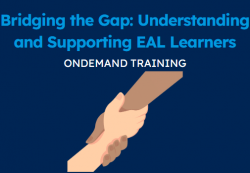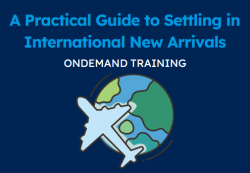
Behind the daily headlines are the schools and the teachers struggling to settle and teach new asylum-seeking and refugee pupils. And the support that you receive to achieve this is patchy at best and often non-existent.
Autumn term will undoubtedly bring more of these pupils into your classrooms – often at very short notice as LEAs struggle to place the growing numbers of new arrivals and often with minimal admission information. “They’re 8 and from Iran, I think,” was the only information given to me for a recent pupil admission. This is so far from what is best practice for these children, but it is the reality of what is happening in many of our schools today.
Provision often fails to match up to the task that education needs to achieve for these children– we know that integration into UK schooling is key to future success, that children are eager to be educated and that school is often the best place for the healing process to begin.
So, where do you start and what do you need to know?
Having worked with Afghan pupils in Primary settings and newly arrived asylum-seeking children in hotels, the starting point that I have found most useful is the Kohli framework (Resumption of Ordinary Life – 2011). This model outlines three practical stages of support – safety, belonging and success – and is a really good format for organising your whole-school approach.
Safety First
Establishing a sense of safety forms the foundation for everything that follows. What is needed to create that feeling of safety will differ enormously between children according to their life, education and migration experiences. Some children may need something as simple as a really clear understanding of the day-to-day working of your school, but others will require much more support. One of our Afghan pupils, who had experienced a long period in hiding in Kabul, needed his mother on site for the first weeks and then a safe space away from the classroom with a designated member of staff as the term progressed.
But safety is not just physical. A feeling of safety for all these children must also encompass having an identity beyond that of a ‘refugee pupil’ – a real recognition of their circumstances, interests, personality and skills as an individual.
Developing a sense of belonging
When a feeling of safety has been established you can then start the process of establishing ties and belonging in their new setting. Gardening and improving the school environment was so important for one of our Syrian pupils. He took grand detours to lessons to show everyone the daffodils that he had planted and nurtured. Friendships, language swaps, classroom roles, wall displays, team positions are also key in this stage.
Success in their new environment
When children feel safe, valued and linked to their new environment they are able to learn and thrive. However, there is a danger that we judge success in terms of English acquisition only and see these children as blank canvasses waiting to be filled with our English curriculum. They are so much more than this and know so much already. It isn’t always easy to do this – and lack of a common language makes it hard but be creative and you will find you have so much to learn from these children. Take time to try and understand what they do know, not just what they don’t know yet.
Recommended Resources

Mini Clip: Bridging the Gap and Supporting EAL Learners
This mini clip focuses on improving the understanding of EAL pupils and the learning challenge that they are facing. Familiarisation with multi-lingual classrooms sometimes leads us to underestimate the EAL experience and these children’s unique language needs. Spending time thinking about what it feels like to be an EAL pupil, how a second language is actually acquired and what effects school closures have had on this cohort, will help you reassess your EAL learners and improve English language support in your classrooms.

Mini Clip: A Practical Guide to Settling in International New Arrivals
This mini clip focuses on how to help new EAL pupils arriving from overseas to settle into school in the UK. The initial arrival period can be a really difficult time for both the child, who may have little or no English, and for the class teacher who is trying to integrate and support that pupil.
The training will take you through an induction framework designed to make arrival in school a more confident and organised process. It will offer lots of practical tips and resources to improve support for new pupils and accelerate their language learning.
Other sources of information
- Bell Foundation – Recommendations for sustainable provision in schools for children who are refugees – https://www.bell-foundation.org.uk/app/uploads/2023/03/Refugee-Recomendations-flyer-FV.pdf
- NEU – Welcoming refugee children to your school – https://neu.org.uk/sites/default/files/2023-02/neu335-refugee-teaching-guide.pdf
- Naldic – Aiming high: Guidance on Supporting the Education of asylum seeking and refugee children – https://www.naldic.org.uk/Resources/NALDIC/Teaching%20and%20Learning/asylumguidance.pdf
- NASUWT – Refugee welcome schools – https://www.nasuwt.org.uk/static/d06e4fef-cd4b-4006-a278bbff64c1d560/Refugee-Welcome-Schools-Guide.pdf
Books
Refugee Education – Theorising Practice in Schools by Joanna McIntyre and Fran Abrams
Sarah Christie is an EAL specialist working in Manchester and has had recent experience teaching English to Afghan pupils in a large primary school and also supporting asylum-seeking pupils in hotel settings and with their transition to primary and secondary schools.






